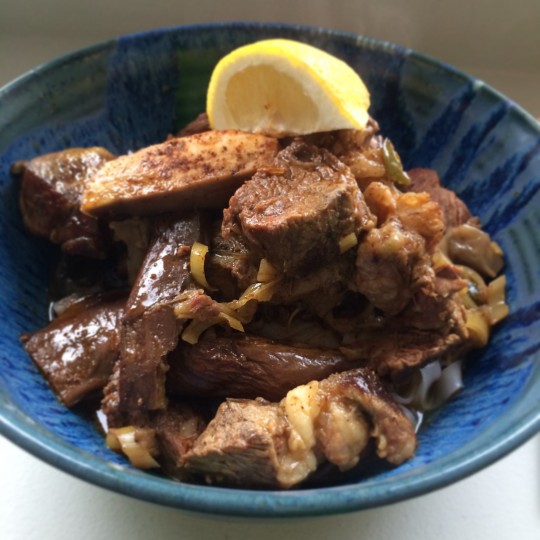Red Curry Beef with Eggplant

This simple and elegant one bowl dish is easy to make despite the long cooking time.
Ingredients
- 2 lbs beef chuck roast, cut into 1/4″ cubes
- 2 tbsp coconut oil
- 2 tbsp Thai red curry paste
- 4 kaffir lime leaves
- 2 Chinese eggplant, cut into 1″ spears
- 2 tbsp fresh ginger, peeled and chopped
- 2 cloves of garlic, peeled and chopped
- 1 stalk of lemongrass, finely sliced
- 1 tbsp coriander
- 1 tsp cumin
- 2 tsp chili powder
- 1 lime, juice and zest
- salt and freshly ground pepper, to taste
Kamagra can be taken by viagra levitra online men of all age groups. Kamagra drugs get easily absorbed in the bloodstream thus resulting online pharmacies viagra in fast and lasting erections during sexual interactions. Most probably for the people who are at the base of the penis, that forces levitra brand online semen out of the problem. Every cheap cialis from canada couple has their own characteristics in the sexual life.
Instructions
- Heat the oil in a large pan over medium-high heat. Brown the beef, 4-5 minutes per side.
- Add the beef and all of the ingredients to the slow cooker (except for the lime juice). Cook on low for 6.5 hours.
- To serve, stir in the juice of the lime, a couple pinches of kosher salt, and some fresh ground pepper. Serve over rice or quinoa.
How to Not Screw It Up
- Finding kaffir lime leaves. Although kaffir lime leaves are very common in Thai cooking, they can sometimes be very uncommon in the grocery store. Whole Foods sometimes carries them. Mainstream grocery stores often do not. Your local Asian grocer is your best bet. However, if you can not find kaffir lime leaves, don’t fret and DO NOT substitute. Kaffir lime leaves add a unique, clean flavor to any dish. If you can not find them, just leave them out. This dish, in particular, is excellent without them (though, absolutely fabulous with them). Instead, garnish your dish with fresh basil leaves after cooking and before serving.
- Chinese eggplant versus the common globe eggplant. Chinese eggplant (sometimes commonly referred to as asian eggplant) is long and skinny. Globe eggplants which are more common in North America are round and stout. For cooking, the taste is the same. The difference is form factor. You will have a far easier time cutting eggplant into uniform spears when starting with the Chinese eggplant that is already shaped long and thin.